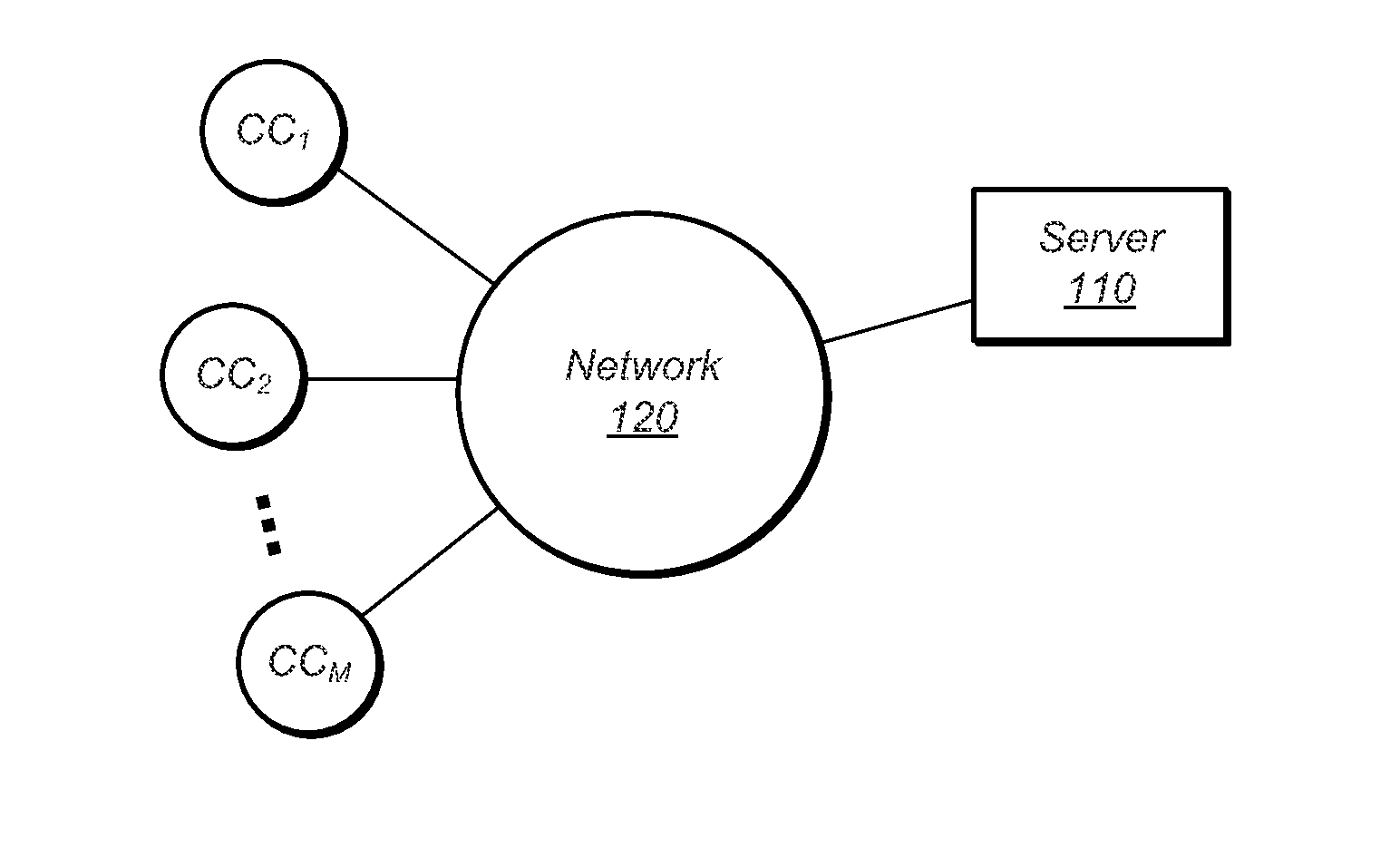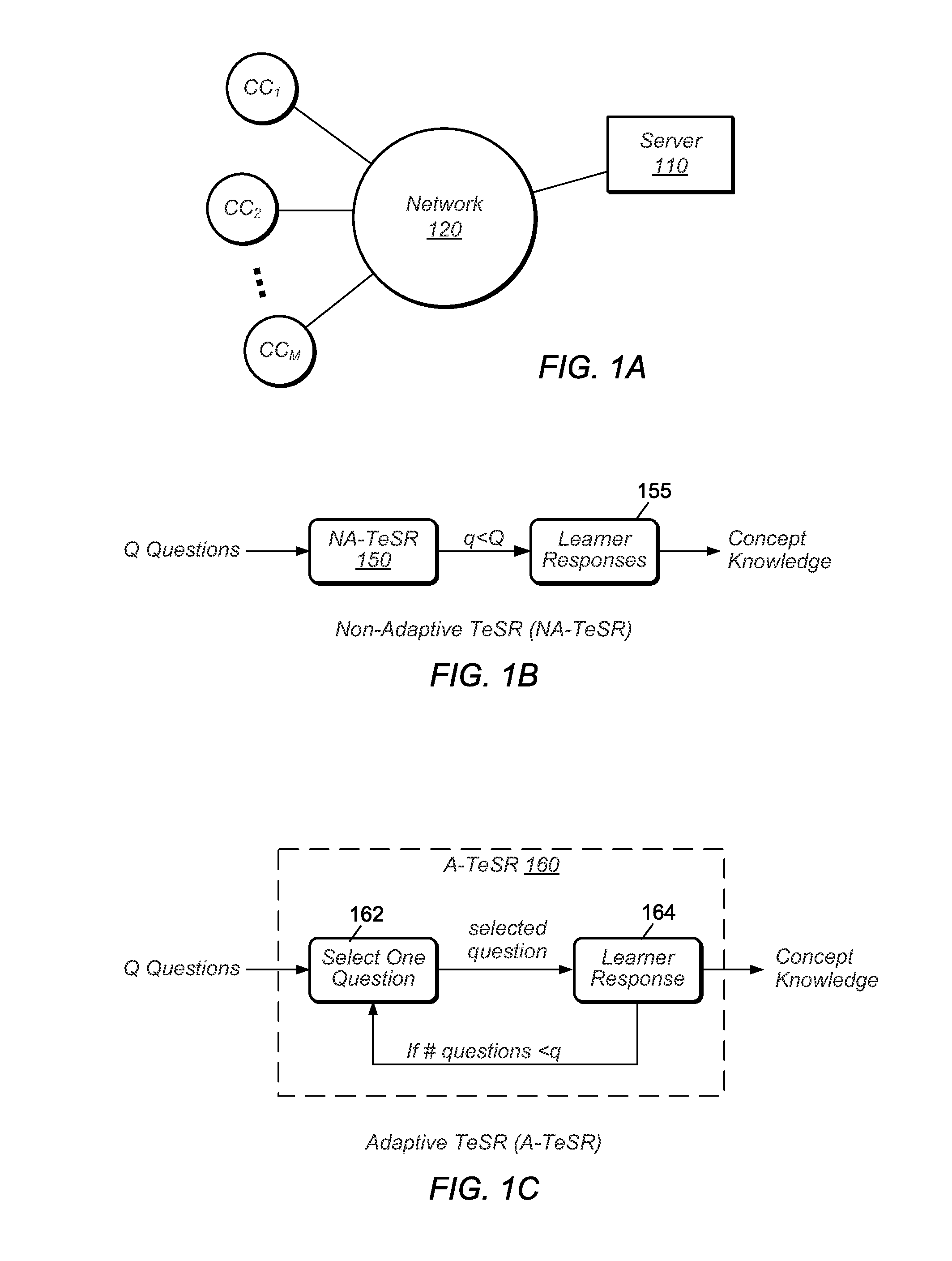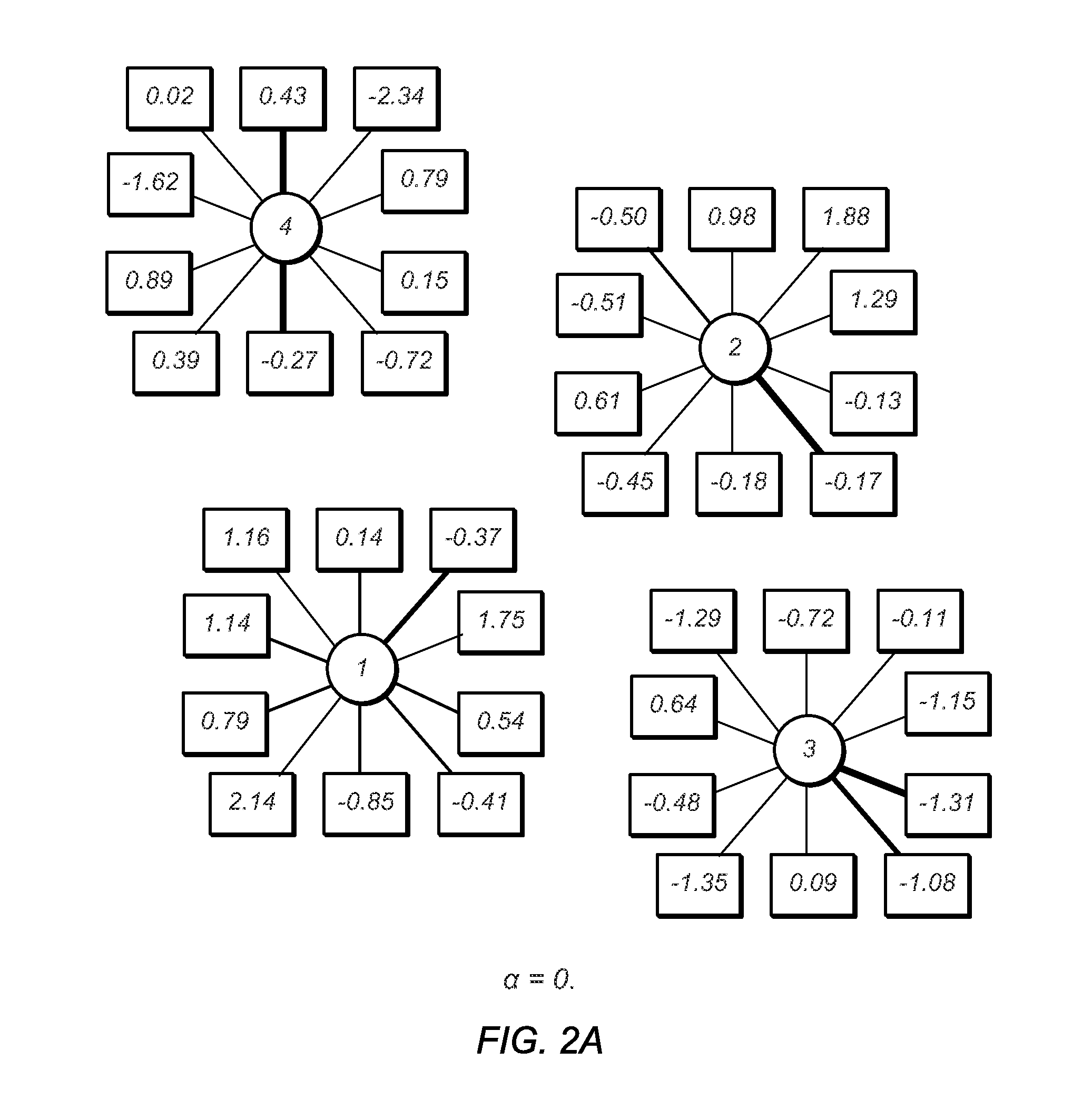Test Size Reduction via Sparse Factor Analysis
a sparse factor and analysis technology, applied in the field of machine learning, can solve problems such as the degraded knowledge of multiple concepts and the inability to accurately estimate learners' knowledge of multiple concepts
- Summary
- Abstract
- Description
- Claims
- Application Information
AI Technical Summary
Benefits of technology
Problems solved by technology
Method used
Image
Examples
Embodiment Construction
Incorporations by Reference
[0030]The following documents are hereby incorporated by reference in their entireties as though fully and completely set forth herein:
[0031]U.S. Provisional Application No. 61 / 840,853, filed Jun. 28, 2013, entitled “Test Size Reduction for Concept Estimation”, invented by Divyanshu Vats, Christoph E. Studer and Richard G. Baraniuk;
[0032]U.S. patent application Ser. No. 14 / 214,835, filed Mar. 15, 2014, entitled “Sparse Factor Analysis for Learning Analytics and Content Analytics”, invented by Baraniuk, Lan, Studer and Waters;
[0033]U.S. Provisional Application 61 / 790,727, filed Mar. 15, 2013, entitled “Sparse Factor Analysis for Learning Analytics and Content Analytics”, invented by Baraniuk, Lan, Studer and Waters.
TERMINOLOGY
[0034]A memory medium is a non-transitory medium configured for the storage and retrieval of information. Examples of memory media include: various kinds of semiconductor-based memory such as RAM and ROM; various kinds of magnetic medi...
PUM
 Login to View More
Login to View More Abstract
Description
Claims
Application Information
 Login to View More
Login to View More - R&D
- Intellectual Property
- Life Sciences
- Materials
- Tech Scout
- Unparalleled Data Quality
- Higher Quality Content
- 60% Fewer Hallucinations
Browse by: Latest US Patents, China's latest patents, Technical Efficacy Thesaurus, Application Domain, Technology Topic, Popular Technical Reports.
© 2025 PatSnap. All rights reserved.Legal|Privacy policy|Modern Slavery Act Transparency Statement|Sitemap|About US| Contact US: help@patsnap.com



